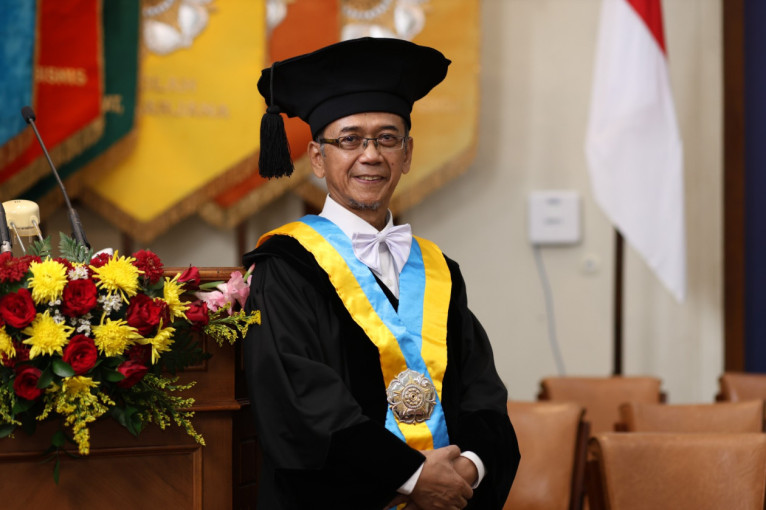
UGM saw another addition to their list of professors. A new professor of electronics and instrumentation, Professor Agus Harjoko, from the UGM Faculty of Mathematics and Natural Sciences, was appointed in a ceremony on Thursday (October 23) at the UGM Senate Hall.
In his inaugural speech, Professor Harjoko discussed the vision of computers for traffic surveillance and the opportunities and challenges it presents.
According to him, computer vision is part of artificial intelligence in computer science, focusing on enhancing the computer’s ability to interpret and understand visual information, much like humans do with their eyes and brains.
This involves the development of algorithms and systems capable of processing and analyzing images and videos, extracting information and meaning from visual data.
The application of computer vision techniques in traffic surveillance, for Professor Harjoko, is a crucial aspect of modern transportation systems as it can aid in traffic management, law enforcement, and public safety.
“Computer vision technology has emerged as a powerful tool to enhance traffic surveillance capabilities, enabling automatic detection, tracking, and analysis of vehicles and pedestrians,” he said.
While computer vision-based traffic surveillance has significantly improved transportation management and safety, it is not without challenges and limitations.
“Ongoing research and development efforts aim to overcome these limitations and enhance the reliability and effectiveness of these systems,” the professor added.
He highlighted that factors such as weather conditions and lighting can significantly impact the performance of computer vision-based traffic surveillance systems.
“These conditions can affect the accuracy and reliability of system performance, leading to challenges in detecting and tracking vehicles and objects,” Professor Harjoko explained.
One way to advance traffic surveillance is by combining traditional computer vision techniques, deep learning, and sensor fusion. This hybrid approach aims to leverage the strengths of each approach while balancing their respective limitations.
“These approaches utilize a combination of traditional computer vision techniques, deep learning, and sensor fusion to overcome specific challenges and improve the performance of surveillance systems,” he clarified.
Professor Harjoko also emphasized that computer vision can design more accurate, robust, and adaptable traffic surveillance systems, providing reliable insights into traffic conditions and supporting safer and more efficient transportation.
Author: Gusti Grehenson
Photographer: Donnie

